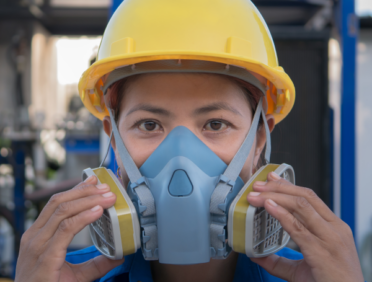Workplace health and safety is an integral part of any commercial environment. However, to guarantee the safety of the people around you, it’s important to follow procedure and policy wherever you can.
For this reason, there are often many policies and procedures that have been designed, especially for the workplace. These are often quite uniform and will be consistent from one place to the next. These policies and procedures are designed for the sake of protecting people in the workplace.
It’s important to understand what your responsibilities are when it comes to the workplace, health and safety.
Health and safety operate according to two different ideas. There are the policies that are created and the procedures that are followed. Each concept is different and plays a unique role in overall workplace health and safety.
Workplace health and safety policies are all about what you will do to try and maintain a high level of health and safety in the workplace. Your policy is the actions that you intend to take. Contrastingly, the procedures that go into workplace health and safety are all about the steps you actually take in a situation.
Health and Safety at Work Act 1974
In quite a bit of the workplace, health and safety policies are covered by the health and safety at work act 1974. This is the fundamental piece of legislation which covers all occupational health and safety in the UK. It’s often referred to by other names, such as the HSWA.
The act covers all of the general duties which employers have towards both their staff and members of the public, as well as the responsibilities that employers have towards both each other and themselves. It also covers what responsibilities self-employed people have.
What Are the Policies and Procedures of the Health and Safety at Work Act?
To provide a brief overview of the act, it requires that all workplaces provide the proper training for staff members to make sure that health and safety procedures are all understood and met. It also strives to make sure that there are adequate provisions for staff at work as well as a safe working environment which is properly maintained by both employers and employees.
The responsibilities laid down in this act will often outline and inform the policies and procedures which are created by individual businesses to comply with the health and safety policies required by law.
As an employer, you are tasked with the responsibility of looking after your employees and guarding them against harm.
This means that you will be required to design and create policies and procedures which will be implemented throughout the workplace to this effect. This is your legal responsibility, and if you do not personally create these policies, you must nominate and train somebody to do it in your stead. However, where possible, you should be the one to create these policies.
Writing a Health and Safety Policy
Writing a health and safety policy is a core part of being the employer of a group of employees. You will be expected to create a health and safety policy which complies with the health and safety at work act 1974.
While you can structure your report and policy in any way you choose as long as it complies with the rules, it is recommended that you use a frame provided, as this makes for a more uniform set of guidelines. These kinds of resources can be found online.
Draft Your Safety Policies
When it comes to creating health and safety policies, it’s recommended that you draft them first. Please do not create a document and then release it as the official policy without first reviewing it and making sure that it complies with all the regulations.
If you are unsure as to whether this meets the needs of the health and safety at work act 1974, you should consult with a third party who has proper knowledge. However, you should also make sure that you have the suitable training required to create a proper policy to start with. You will be expected to attend any training necessary to do so.
Review Any Current Health and Safety Documentation
Make sure that you review any current health and safety documentation on a regular basis to make sure that it complies with the latest procedures and protocols. In the event of a workplace accident or substantial changes to the structural or operational way your business functions, you will need to review the documentation again. Making sure that you regularly review these policies will help to guarantee that you are not working with all documentation or failing to comply with one of the rules.
Statement of Intent
The statement of intent is your general policy when it comes to health and safety. It will include your commitment to managing health and safety and your aims for doing so. As the employer or most senior member of your business, it is your responsibility to sign this statement and review it on a regular basis. You should be aware that your statement of intent is considered to be part of your legal responsibility as the employer. If you violate this statement, you could be held accountable for accidents which take place in the workplace or incidents that compromise health and safety.
Responsibilities for Health and Safety
As the employer of the business, you have certain responsibilities for health and safety. Not only are you expected to design and create a policy for your workers to follow, but you are also expected to outline rules and regulations. You are expected to train staff to follow health and safety guidelines, and you are also expected to make sure that the business operates in such a way which is compliant with health and safety. If you choose, you can nominate and train a health and safety representative within the workplace who will ensure these responsibilities are met on your behalf.
Conduct On-Site Risk Assessments
Part of your responsibility when it comes to health and safety in the workplace is conducting on-site risk assessments.
These assessments will inspect the workplace and identify areas where health and safety could be compromised. As part of the risk assessment, you will be expected to identify and implement control measures designed to reduce the risk of the hazard occurring.
As usual, if you do not wish to undertake this for yourself, you have to nominate and train a representative to do so on your behalf. However, you should take this responsibility wherever possible.
Audit and Inspections
As part of workplace health and safety, you may be subject to both an audit and inspections by the local authority.
There will be a designated member of the local authority who is required to inspect every business on a regular basis to make sure they are compliant with health and safety laws. At the same time, they may perform an audit of your business, which will require you to submit any relevant documentation and comply with their requests. You have a legal responsibility to respect and submit to any request for an audit or inspection.
In the event of an incident occurring within the workplace, there should be a clear reporting process.
Employees should know who to report the incident to, it should be logged and recorded in a proper fashion, and then a requisite assessment of the health and safety policies within the workplace needs to be conducted to make sure that the accident was not preventable. The process required for incident reporting should be outlined clearly within the health and safety policy, and there will need to be a designated individual that receives these reports.
Emergency Procedures
In the event of an emergency, emergency procedures will need to be followed. These will be guidelines that you have created in compliance with health and safety law to ensure the safety of your employees within an emergency situation. Whether this is fire safety protocol, or emergency first-aid in the event of a serious accident, you will be expected to make suitable provisions for your workers.
Emergency procedures should be clearly outlined in the health and safety policy and then taught to all staff members. It is also beneficial to run test drills to make sure that everybody knows what to do in the event of an emergency.
Provide Training For Your Employees
You have a responsibility to provide full training for your employees to make sure that they are fully engaged and understand what to do in the event of health and safety concerns. This is a task that Learn Q is happy to undertake, as we provide full training opportunities for all of your staff members. We can provide all the necessary knowledge to make sure that your staff know not only how to handle a health and safety violation but also what to do in the event of an emergency, how to report incidents, and what the health and safety policy means for their personal responsibilities.
To download a .pdf of this blog, please click here












